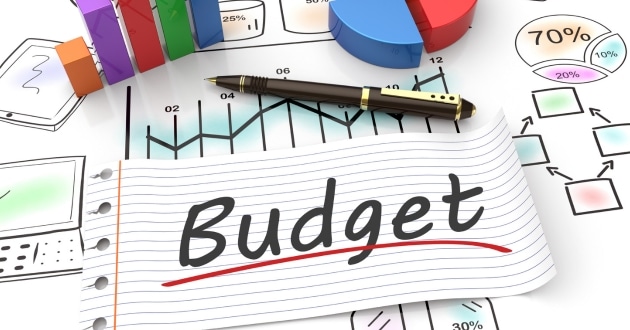How to create a budget is an essential skill for anyone looking to gain control over their financial situation. Establishing a budget helps you track your income and expenses, ensuring that you live within your means and avoid unnecessary debt. By following a few simple steps, you can create a budget that works for your lifestyle and helps you achieve your financial goals.
One of the most important aspects of learning how to create a budget is understanding your spending habits. Start by listing all your sources of income and then categorize your expenses. This process will give you a clear picture of where your money is going and help you identify areas where you can cut back or reallocate funds to savings or investments.
In addition to tracking your expenses, a crucial part of how to create a budget involves setting realistic financial goals. Whether you are saving for a big purchase, paying off debt, or building an emergency fund, having specific objectives will keep you motivated and disciplined. Regularly reviewing and adjusting your budget ensures that it remains effective and aligned with your financial aspirations.
Understanding the Importance of Budgeting

Before diving into the specifics of how to create a budget, it’s essential to understand why budgeting is so important. A budget helps you:
- Control Your Spending: By tracking your expenses, you can identify and cut unnecessary costs.
- Achieve Financial Goals: Whether it’s saving for a vacation, a new car, or retirement, a budget helps you allocate funds towards these goals.
- Reduce Financial Stress: Knowing where your money is going each month can alleviate anxiety and provide peace of mind.
- Avoid Debt: By managing your income and expenses, you can avoid relying on credit cards or loans to make ends meet.
Steps to Create a Budget
Creating a budget involves several steps. Each step builds on the previous one, helping you develop a comprehensive financial plan.
1. Calculate Your Income (How to create a budget)
The first step in creating a budget is to determine your total monthly income. This includes:
- Salary/Wages: After taxes and other deductions.
- Freelance Work: Any additional income from side jobs or freelance projects.
- Investments: Dividends, interest, or rental income.
- Other Sources: Child support, alimony, or government benefits.
Having a clear understanding of your income is crucial as it forms the basis of your budget.
2. Track Your Expenses
Next, track your monthly expenses. Categorize them into fixed and variable expenses:
- Fixed Expenses: Rent/mortgage, utilities, insurance, car payments, and any other regular payments.
- Variable Expenses: Groceries, dining out, entertainment, clothing, and other fluctuating costs.
You can use various tools and apps to track your spending, such as Mint or YNAB (You Need A Budget).
3. Set Financial Goals
Define your short-term and long-term financial goals. Examples include:
- Short-Term Goals: Building an emergency fund, saving for a vacation, or paying off credit card debt.
- Long-Term Goals: Saving for a down payment on a house, retirement, or your child’s education.
Having specific goals will motivate you to stick to your budget and make necessary adjustments.
4. Categorize Your Spending
Break down your expenses into categories, such as:
- Housing: Rent/mortgage, utilities, and maintenance.
- Transportation: Car payments, gas, public transit, and maintenance.
- Food: Groceries, dining out, and snacks.
- Insurance: Health, auto, life, and home insurance.
- Savings: Emergency fund, retirement, and other savings goals.
- Entertainment: Movies, concerts, hobbies, and subscriptions.
Categorizing your spending helps you see where your money is going and identify areas where you can cut back.
5. Create Your Budget (How to create a budget)
Now it’s time to put everything together and create your budget. Follow these steps:
- List Your Income: Write down your total monthly income.
- List Your Expenses: Write down your total monthly expenses by category.
- Subtract Expenses from Income: This will show you how much money you have left each month or if you’re overspending.
If you find that you’re spending more than you earn, look for areas where you can reduce expenses.
6. Adjust and Monitor Your Budget
Your budget is not a set-it-and-forget-it tool. Regularly review and adjust your budget to reflect changes in your income, expenses, and financial goals.
- Monthly Review: At the end of each month, compare your actual spending to your budget. Make adjustments as needed.
- Adjust for Life Changes: If you get a raise, change jobs, or have a major life event, update your budget accordingly.
- Use Budgeting Tools: Consider using budgeting apps like Mint, YNAB, or Personal Capital to help you stay on track.
Tips for Successful Budgeting (How to create a budget)
Creating a budget is just the first step. To ensure long-term success, follow these tips:
1. Be Realistic
Set realistic spending limits and savings goals. Overly restrictive budgets are difficult to stick to and can lead to frustration and burnout.
2. Prioritize Needs Over Wants
Distinguish between needs and wants. Prioritize essential expenses like housing, utilities, and groceries before allocating money for discretionary spending.
3. Build an Emergency Fund
Aim to save at least three to six months’ worth of living expenses in an emergency fund. This fund will provide a financial cushion in case of unexpected events like job loss or medical emergencies.
4. Avoid Impulse Spending
Plan your purchases and avoid impulsive buys. Give yourself a cooling-off period before making non-essential purchases to ensure they’re necessary and fit within your budget.
5. Stay Flexible (How to create a budget)
Life is unpredictable, and your budget should be flexible enough to accommodate changes. If you encounter unexpected expenses, adjust your budget and avoid dipping into your savings.
6. Seek Professional Advice
If you’re struggling to create or stick to a budget, consider seeking advice from a financial advisor. They can provide personalized guidance and help you develop a budget tailored to your unique financial situation.
Exploring the Best Personal Finance Apps
Finding the right tools to manage your finances can make a significant difference in achieving your financial goals. The best personal finance apps offer features like budgeting, expense tracking, and investment management to help you stay on top of your financial health. To learn more about the top apps available and how they can benefit you, check out best personal finance apps.
Sample Budget Template
Here’s a simple budget template to help you get started:
| Category | Monthly Income | Monthly Expenses |
|---|---|---|
| Income | $5,000 | |
| Housing | $1,200 | |
| Transportation | $300 | |
| Food | $600 | |
| Insurance | $250 | |
| Savings | $500 | |
| Entertainment | $200 | |
| Miscellaneous | $150 | |
| Total | $5,000 | $3,200 |
In this example, the individual has $5,000 in monthly income and $3,200 in expenses, leaving $1,800 for savings or discretionary spending.
Why YNAB Is One of the Best Personal Finance Apps (How to create a budget)
When it comes to personal finance management, YNAB (You Need A Budget) stands out for its robust budgeting tools and user-friendly interface. It helps users allocate every dollar, track expenses, and achieve financial goals effectively. To learn more about its features and benefits, visit YNAB.
Conclusion
Learning how to create a budget is an essential skill that can lead to greater financial security and peace of mind. By following the steps outlined in this guide, you can develop a budget that helps you manage your money effectively, achieve your financial goals, and reduce financial stress. Remember, the key to successful budgeting is consistency and flexibility. Regularly review and adjust your budget to reflect your changing financial situation, and stay committed to your financial goals. With time and discipline, you’ll find that budgeting becomes second nature, leading to a more secure and prosperous financial future.



